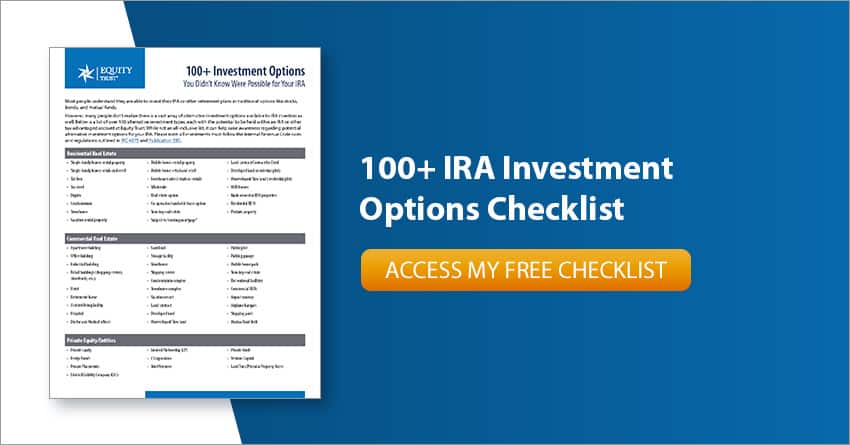Become a
Smarter
Investor
in 15 Minutes
Free guide helps you unlock the potential
of your retirement account
– all before you
finish a cup of coffee.
Have you discovered the wealth-building power of the self-directed retirement account and want to get started? Here’s what you need to know to set up a self-directed Traditional IRA or Roth IRA with Equity Trust.

Open your self-directed account online with myEQUITY. It takes just a few minutes, and you’ll be guided through the steps to provide your personal information and method of funding for your account. After a final review of your application and signing using eSignature, your application will be submitted.
Your account will typically be opened within 3 business days. Delays may occur if there are any corrections needed from you in order to complete the account setup process.

These options are not mutually exclusive. It is possible to fund your IRA by one, two, or all three methods. Additionally, it may be possible to fund a Roth IRA through a Roth Conversion.
See below for more details about each funding option.

You direct all investments for your account with the freedom and flexibility to diversify your portfolio with both alternative and traditional assets.
No investment? Explore opportunities in Investment District, our online marketplace.
You can process your investment direction online using the intuitive wizards or Transaction Launcher feature on myEQUITY to submit your request. The Transaction Tracker and dashboard provide access to monitor transactions around-the-clock from any device.
Open Your Account OnlineRollover, Transfer, Out of Pocket Contribution, or Roth Conversion
Rollover
Transfer
Out-of-Pocket Contribution
Roth Conversion
100+ Investment Options You Didn’t Know Were Possible for Your IRA

Traditional IRAs and Roth IRAs are options for those who want to self-direct their retirement account.

Allows you to make contributions with pre-tax money and may provide a tax deduction, while the investment earnings are tax-deferred until withdrawn from the account.
Advantages:
Individuals age 59½ are eligible to start taking withdrawals, but at age 72, required minimum distributions must begin.
Learn More
Allows you to make contributions with after-tax dollars (not eligible for tax deduction). The Roth IRA is designed to allow investment earnings to grow tax-free and provides the opportunity for tax-free withdrawals in retirement. Earnings and qualified distributions are tax-free after age 59½.
Advantages:
U.S citizens, regardless of age, can open a Roth IRA, assuming their individual Modified Adjusted Gross Income (MAGI) is within allowable limits.
Learn More
Let’s talk about your financial future.
Schedule a one-on-one session with an expert alternative investment counselor. We’re here to answer any questions, help guide you through the process, and provide more detailed information and education specific to your journey.
By entering your information and clicking Start a Conversation, you consent to receive reoccurring automated marketing text messages and emails about Equity Trust’s products and services. This consent is not required to obtain products and services. If you do not consent to receive text messages and emails from Equity Trust and seek information, contact us at 855-233-4382. Reply STOP to opt out from text messages. Message and data rates may apply. View Terms & Privacy.
You are leaving trustetc.com to enter the ETC Brokerage Services (Member FINRA/SIPC) website (etcbrokerage.com), the registered broker-dealer affiliate of Equity Trust Company. ETC Brokerage Services provides access to brokerage and investment products which ARE NOT FDIC insured. ETC Brokerage does not provide investment advice or recommendations as to any investment. All investments are selected and made solely by self-directed account owners.
Continue